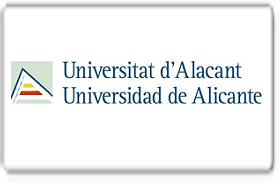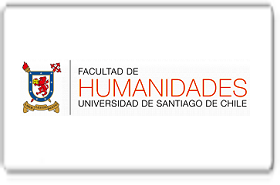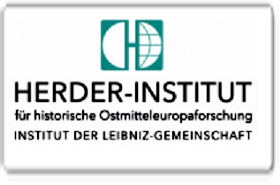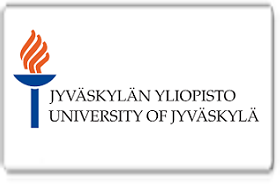Complicaciones intra y post operatorias de las histerectomías: laparoscópica, abdominal y vaginal en mujeres adultas.
DOI:
https://doi.org/10.56048/MQR20225.7.3.2023.2915-2948Palabras clave:
histerectomía, indicaciones, factores de riesgo, complicacionesResumen
Objetivo: describir las complicaciones intra y post operatorias de las histerectomías: laparoscópica, abdominal y vaginal en mujeres adultas. Metodología: se realizó una revisión bibliográfica basada en criterios de selección que abarcaron artículos publicados desde 2018 hasta la fecha. Las fuentes consultadas incluyeron bases de datos reconocidas como Scopus, Scielo, JAMA, Redalyc, Pubmed, ScienceDirect y SpringerLink. Se emplearon términos de búsqueda como "Histerectomía", "Hysterectomy", "Histerectomía Vaginal", "Colpohisterectomía" y "Vaginal Hysterectomy". A partir de esta búsqueda, se seleccionaron 44 estudios que sirvieron como base para la investigación. Resultados: la histerectomía es una cirugía común en mujeres, cuyas indicaciones dependen del tipo de procedimiento y la condición clínica del paciente. Esta intervención puede presentar complicaciones, las cuales están influenciadas por diversos factores, entre ellos el IMC del paciente y la experiencia del cirujano. Existen diferentes técnicas de histerectomía, cada una con su propio perfil de complicaciones. Es esencial que, al seleccionar la técnica, se considere la situación clínica del paciente y la experiencia del cirujano para minimizar los riesgos asociados. Conclusiones: la histerectomía es una intervención esencial en la salud ginecológica, pero no está exenta de riesgos. La elección de la técnica quirúrgica y la experiencia del cirujano son determinantes en el resultado postoperatorio. Es imperativo que los profesionales de la salud estén bien informados y capacitados para seleccionar el procedimiento adecuado, adaptado a las necesidades y condiciones de cada paciente, con el objetivo de garantizar una recuperación segura y eficaz.
Descargas
Métricas
Cited
DOI: 10.56048![]()
Citas
Sakuragi N, Kato T, Shimada C, Kaneuchi M, Todo Y, Mitamura T, et al. Oncological outcomes after Okabayashi-Kobayashi radical hysterectomy for early and locally advanced cervical cancer. JAMA Netw Open [Internet]. 2020;3(5):e204307–e204307. Available from: https://jamanetwork.com/journals/jamanetworkopen/article-abstract/2765657
Orhan A, Ozerkan K, Kasapoglu I, Ocakoglu G, Demir B, Gunaydin T, et al. Laparoscopic hysterectomy trends in challenging cases (1995–2018). J Gynecol Obstet Hum Reprod [Internet]. 2019;48(10):791–8. Available from: https://www.sciencedirect.com/science/article/abs/pii/S2468784719302223
Lirk P, Thiry J, Bonnet M, Joshi G, Bonnet F. Pain management after laparoscopic hysterectomy: systematic review of literature and PROSPECT recommendations. Reg Anesth Pain Med [Internet]. 2019;44(4):425–36. Available from: https://rapm.bmj.com/content/44/4/425.abstract
Ebner F, De Gregorio N, Lato C, Ohly V, Janni W, Spohrs J, et al. Choosing a surgical access point for hysterectomy: a paradigm shift over a 10-year span. Front Med [Internet]. 2020;7:569895. Available from: https://www.frontiersin.org/articles/10.3389/fmed.2020.569895/full
Iglesias L, Soto M. Vida sexual tras histerectomía por motivos benignos. Una revisión sistemática. Clin Invest Ginecol Obstet [Internet]. 2020;47(2):78–88. Available from: https://www.sciencedirect.com/science/article/abs/pii/S0210573X19300796
Chinolla-Arellano Z, Bañuelos-Rodríguez J, Martínez-Sevilla V, García-Bello J. Complicaciones de la histerectomía total laparoscópica en pacientes de un hospital de alta especialidad. Cir Cir [Internet]. 2021;89(3):347–53. Available from: https://www.scielo.org.mx/scielo.php?pid=S2444-054X2021000300347&script=sci_arttext
Maraschini A, Lega I, D’Aloja P, Buoncristiano M, Dell’Oro S, Donati S, et al. Women undergoing peripartum hysterectomy due to obstetric hemorrhage: a prospective population‐based study. Acta Obstet Gynecol Scand [Internet]. 2020;99(2):274–82. Available from: https://obgyn.onlinelibrary.wiley.com/doi/full/10.1111/aogs.13727
Kallianidis A, Maraschini A, Danis J, Colmorn L, Deneux‐Tharaux C, Donati S, et al. Epidemiological analysis of peripartum hysterectomy across nine European countries. Acta Obstet Gynecol Scand [Internet]. 2020;99(10):1364–73. Available from: https://obgyn.onlinelibrary.wiley.com/doi/full/10.1111/aogs.13892
Beyan E, İnan A, Emirdar V, Budak A, Tutar S, Kanmaz A. Comparison of the effects of total laparoscopic hysterectomy and total abdominal hysterectomy on sexual function and quality of life. Biomed Res Int [Internet]. 2020;2020. Available from: https://www.hindawi.com/journals/bmri/2020/8247207/
Hakkarainen J, Nevala A, Tomás E, Nieminen K, Malila N, Pitkäniemi J, et al. Decreasing trend and changing indications of hysterectomy in Finland. Acta Obstet Gynecol Scand [Internet]. 2021;100(9):1722–9. Available from: https://obgyn.onlinelibrary.wiley.com/doi/full/10.1111/aogs.14159
Madueke-Laveaux O, Elsharoud A, Al-Hendy A. What we know about the long-term risks of hysterectomy for benign indication—a systematic review. J Clin Med [Internet]. 2021;10(22):5335. Available from: https://www.mdpi.com/2077-0383/10/22/5335
Chen R, You J. Comparison of hysterectomy and uterine artery embolization in the treatment of symptomatic uterine fibroids: A protocol for systematic review and meta-analysis. Medicine (Baltimore) [Internet]. 2022;101(52). Available from: https://www.ncbi.nlm.nih.gov/pmc/articles/PMC9803433/
Jorgensen E, Fitzgerald A, Clark N. Evolving best practices in the surgical management of endometriosis–examining the evidence and expert opinion. Curr Opin Obstet Gynecol [Internet]. 2023;35(4):383–8. Available from: https://www.ingentaconnect.com/content/wk/coogy/2023/00000035/00000004/art00017
Sarwar I, Bibi A, Khurshid W, Islam A, Bibi S. Management of uterine prolapse: vaginal hysterectomy versus uterus preserving procedures. J Rehman Med Inst [Internet]. 2023;9(2):10–3. Available from: https://jrmi.pk/article/view/506
Brandt B, Sioulas V, Basaran D, Kuhn T, LaVigne K, Gardner G, et al. Minimally invasive surgery versus laparotomy for radical hysterectomy in the management of early-stage cervical cancer: survival outcomes. Gynecol Oncol [Internet]. 2020;156(3):591–7. Available from: https://www.sciencedirect.com/science/article/abs/pii/S0090825819318682
Ren H, Zhang Y, Duan H. Recent advances in the management of postmenopausal women with non-atypical endometrial hyperplasia. Climacteric [Internet]. 2023;1–8. Available from: https://www.tandfonline.com/doi/abs/10.1080/13697137.2023.2226316
Selvanathan S, Acharya N, Singhal S. Quality of life after hysterectomy and uterus-sparing hysteroscopic management of abnormal uterine bleeding or heavy menstrual bleeding. J Midlife Health [Internet]. 2019;10(2):63. Available from: https://www.ncbi.nlm.nih.gov/pmc/articles/PMC6643714/
Cockrum R, Tu F. Hysterectomy for chronic pelvic pain. Obstet Gynecol Clin [Internet]. 2022;49(2):257–71. Available from: https://europepmc.org/article/med/35636807
Monet-Fernández Y, Cora-Abraham J, Hernández C, Fundora-Madruga G. Histerectomía videolaparoscópica. Rev Cuba Cirugía [Internet]. 2020;59(3):1–13. Available from: http://scielo.sld.cu/scielo.php?script=sci_arttext&pid=S0034-74932020000300002
Rodríguez-Fajardo R. Histerectomía laparoscópica comparada con histerectomía abdominal en el manejo del precancer de cuello uterino. Univ Priv Antenor Orrego - UPAO [Internet]. 2022;1–30. Available from: http://repositorio.upao.edu.pe/bitstream/20.500.12759/9421/1/REP_ROBERTO.RODRIGUEZ_HISTERECTOMIA.LAPAROSCOPICA.pdf
Leyva-Vázquez F, García-Rodríguez M. Histerectomía vaginal convencional y vaginal asistida por laparoscopia en pacientes sin prolapso uterino. Rev Arch médico Camagüey [Internet]. 2021;25(3). Available from: http://scielo.sld.cu/scielo.php?script=sci_arttext&pid=S1025-02552021000300004
Espinoza L, Loor F, Carvajal K, Parra W. Factores asociados a incidencia complicaciones transoperatorias y postoperatorias en pacientes histerectomizadas patología benigna. Dominio las Ciencias [Internet]. 2021;7(4):100. Available from: https://dialnet.unirioja.es/servlet/articulo?codigo=8384043
Bahadur A, Mundhra R, Kashibhatla J, Chawla L, Ajmani M, Sharma S, et al. Intraoperative and Postoperative Complications in Gynaecological Surgery: A Retrospective Analysis. Cureus [Internet]. 2021;13(5). Available from: https://assets.cureus.com/uploads/original_article/pdf/56598/20210606-8986-9eudff.pdf
Hyun S, Oh S, Cho Y, Han M, Park J-W, Kim S, et al. Comparison of vaginal hysterectomy and laparoscopic hysterectomy: a systematic review and meta-analysis. BMC Womens Health [Internet]. 2019;19:1–12. Available from: https://link.springer.com/article/10.1186/s12905-019-0784-4
Urgellés S, Álvarez M, Reyes E, Alejandro C, Fleites Y. Factores de riesgo asociados a las complicaciones postquirúrgicas de la histerectomía abdominal. Rev Cuba Obstet y Ginecol [Internet]. 2021;47(1):1–12. Available from: https://www.medigraphic.com/cgi-bin/new/resumen.cgi?IDARTICULO=105868
Bruno M, Legge F, Gentile C, Carone V, Stabile G, Di Leo F, et al. Risk Assessment Model for Complications in Minimally Invasive Hysterectomy: A Pilot Study. Int J Environ Res Public Health [Internet]. 2022;20(1):234. Available from: https://www.mdpi.com/1660-4601/20/1/234
Sentilhes L, Seco A, Azria E, Beucher G, Bonnet M, Branger B, et al. Conservative management or cesarean hysterectomy for placenta accreta spectrum: the PACCRETA prospective study. Am J Obstet Gynecol [Internet]. 2022;226(6):839-e1. Available from: https://www.sciencedirect.com/science/article/abs/pii/S0002937821026557
Kaya A, Radosa M, Zimmermann J, Stotz L, Findeklee S, Hamza A, et al. Intraoperative and postoperative complications of gynecological laparoscopic interventions: incidence and risk factors. Arch Gynecol Obstet [Internet]. 2021;304(5):1259–69. Available from: https://link.springer.com/article/10.1007/s00404-021-06192-7
Liang C, Liu P, Cui Z, Liang Z, Bin X, Lang J, et al. Effect of laparoscopic versus abdominal radical hysterectomy on major surgical complications in women with stage IA-IIB cervical cancer in China, 2004–2015. Gynecol Oncol [Internet]. 2020;156(1):115–23. Available from: https://www.sciencedirect.com/science/article/abs/pii/S0090825819316191
Jin Y-M, Liu S-S, Chen J, Chen Y-N, Ren C-C. Robotic radical hysterectomy is superior to laparoscopic radical hysterectomy and open radical hysterectomy in the treatment of cervical cancer. PLoS One [Internet]. 2018;13(3):e0193033. Available from: https://journals.plos.org/plosone/article?id=10.1371/journal.pone.0193033
Gallotta V, Conte C, Federico A, Vizzielli G, Alletti S, Tortorella L, et al. Robotic versus laparoscopic radical hysterectomy in early cervical cancer: a case matched control study. Eur J Surg Oncol [Internet]. 2018;44(6):754–9. Available from: https://www.sciencedirect.com/science/article/abs/pii/S074879831830129X
Capozzi V, Monfardini L, Scarpelli E, Barresi G, Rotondella I, De Finis A, et al. Urologic Complication after Laparoscopic Hysterectomy in Gynecology Oncology: A Single-Center Analysis and Narrative Review of the Literature. Medicina (B Aires) [Internet]. 2022;58(12):1869. Available from: https://www.mdpi.com/1648-9144/58/12/1869
Li Z, Chen C, Liu P, Duan H, Liu M, Xu Y, et al. Comparison of oncological outcomes and major complications between laparoscopic radical hysterectomy and abdominal radical hysterectomy for stage IB1 cervical cancer with a tumour size less than 2ácm. Eur J Surg Oncol [Internet]. 2021;47(8):2125–33. Available from: https://www.sciencedirect.com/science/article/abs/pii/S0748798321003796
Casarin J, Cromi A, Bogani G, Multinu F, Uccella S, Ghezzi F. Surgical morbidity of total laparoscopic hysterectomy for benign disease: Predictors of major postoperative complications. Eur J Obstet Gynecol Reprod Biol [Internet]. 2021;263:210–5. Available from: https://www.sciencedirect.com/science/article/abs/pii/S030121152100302X
Naveiro-Fuentes M, Rodríguez-Oliver A, Fernández-Parra J, González-Paredes A, Aguilar-Romero T, Mozas-Moreno J. Effect of surgeon’s experience on complications from laparoscopic hysterectomy. J Gynecol Obstet Hum Reprod [Internet]. 2018;47(2):63–7. Available from: https://www.sciencedirect.com/science/article/abs/pii/S246878471730243X
McDonnell R, Hollingworth J, Chivers P, Cohen P, Salfinger S. Advanced training of gynecologic surgeons and incidence of intraoperative complications after total laparoscopic hysterectomy: a retrospective study of more than 2000 cases at a single institution. J Minim Invasive Gynecol [Internet]. 2018;25(5):810–5. Available from: https://www.sciencedirect.com/science/article/abs/pii/S1553465017313341
Hee S, Lee J-Y, Ji E, Kim S, Wun S, Tae Y. Prediction of perioperative complications after robotic-assisted radical hysterectomy for cervical cancer using the modified surgical Apgar score. BMC Cancer [Internet]. 2018;18:1–7. Available from: https://link.springer.com/article/10.1186/s12885-018-4809-4
Akgör U, Kuru O, Güneş A, Karataş E, Temiz E, Erzeneoğlu E, et al. Impact of clinicopathological variables on laparoscopic hysterectomy complications, a tertiary center experience. Ginekol Pol [Internet]. 2022;93(2):105–11. Available from: https://journals.viamedica.pl/ginekologia_polska/article/view/70765
Tchartchian G, Bojahr B, Krentel H, De Wilde R. Evaluation of complications, conversion rate, malignancy rate, and, surgeon’s experience in laparoscopic assisted supracervical hysterectomy (LASH) of 1274 large uteri: A retrospective study. Acta Obstet Gynecol Scand [Internet]. 2022;101(12):1450–7. Available from: https://obgyn.onlinelibrary.wiley.com/doi/full/10.1111/aogs.14468
Wenzel H, Kruitwagen R, Nijman H, Bekkers R, Van Gorp T, de Kroon CD, et al. Short‐term surgical complications after radical hysterectomy—A nationwide cohort study. Acta Obstet Gynecol Scand [Internet]. 2020;99(7):925–32. Available from: https://obgyn.onlinelibrary.wiley.com/doi/full/10.1111/aogs.13812
Uppal S, Liu R, Reynolds K, Rice L, Spencer R. Trends and comparative effectiveness of inpatient radical hysterectomy for cervical cancer in the United States (2012–2015). Gynecol Oncol [Internet]. 2019;152(1):133–8. Available from: https://www.sciencedirect.com/science/article/abs/pii/S0090825818312460
Danilyants N, MacKoul P, Baxi R, van der Does L, Haworth L. Value‐based assessment of hysterectomy approaches. J Obstet Gynaecol Res [Internet]. 2019;45(2):389–98. Available from: https://obgyn.onlinelibrary.wiley.com/doi/full/10.1111/jog.13853
Hwang J, Kim B-W. Laparoscopic radical hysterectomy has higher risk of perioperative urologic complication than abdominal radical hysterectomy: a meta-analysis of 38 studies. Surg Endosc [Internet]. 2020;34:1509–21. Available from: https://link.springer.com/article/10.1007/s00464-020-07366-1
López P, Guerrero J, Quizhpe E. Estudio Retrospectivo: Histerectomía Abdominal vs Histerectomía Vaginal, Análisis de Complicaciones Hospitalarias. Hospital San Francisco de Quito. Quito - Ecuador, 2014 - 2015. Rev Med HJCA [Internet]. 2018;10(2):121–5. Available from: https://docs.bvsalud.org/biblioref/2022/11/1000253/117-texto-del-articulo-187-1-10-20200124-1.pdf
Publicado
Cómo citar
Número
Sección
Licencia
Derechos de autor 2023 MQRInvestigar

Esta obra está bajo una licencia internacional Creative Commons Atribución 4.0.
Los autores se comprometen a respetar la información académica de otros autores, y a ceder los derechos de autor a la Revista MQRInvestigar, para que el artículo pueda ser editado, publicado y distribuido. El contenido de los artículos científicos y de las publicaciones que aparecen en la revista es responsabilidad exclusiva de sus autores. La distribución de los artículos publicados se realiza bajo una licencia 
































































































